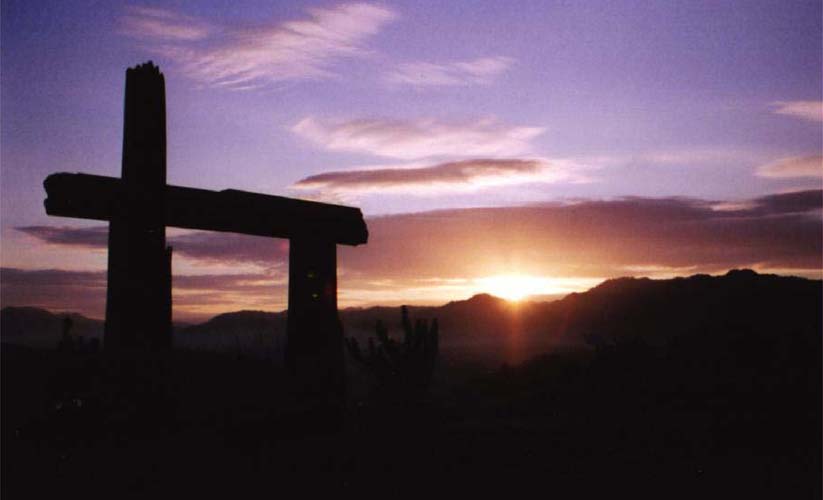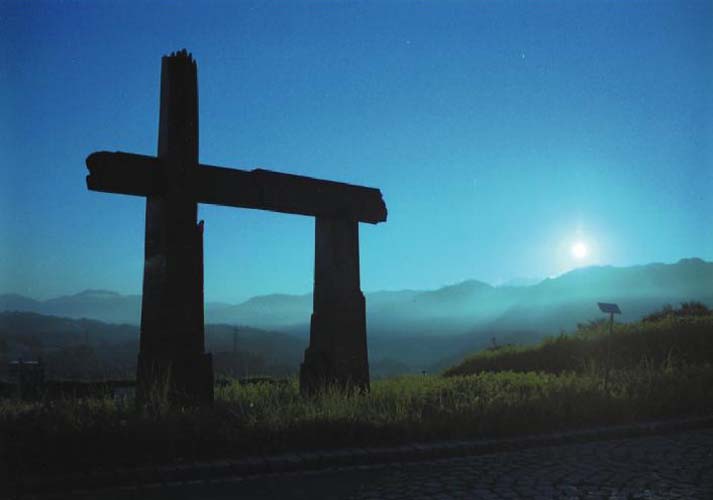| 大成の門へ −陶彫作家・川上力三の軌跡− − Works of KAWAMAMI Rikizo, a clay work artist− |
|
太田垣 實(おおたがき・まこと) |
|
|
|
| 滋賀県立陶芸の森・陶芸館の入り口近くに、陶彫作家・川上力三の最大の作品「風の門−宙−」(2006年) が設置されている。五つのパーツを接合、構成した陶立体は、高さ3m、最大幅約3mのスケール。濃い茶系の 重厚な門の構えは、遺構の一部のような風情さえしのばせる。陶芸館は、陶芸の森の小高い丘の上にあり、焼き ものの里・信楽の街並みや周囲の山並みを一望できる。「風の門」は、わが国の六古窯のひとつ信楽の歴史や風 土を巡る風が悠久の時空へ通過していく場のようでもあり、国内外の現代陶芸を紹介する美の館へ誘うゲートの 役目も果たしている。川上の創作活動を代表する大作だ。 「門」という題名の作品を初めて発表したのは、1998年の50周年記念「走泥社展」。前衛陶芸の歴史を切り ひらいた走泥社が解散し、フィナーレとなった展覧会に出品した「門(終わり又始まる)」だった。日本の現代 陶芸に大きな足跡を示した走泥社の八木一夫や山田光ら創立会員に続く第二世代の有力作家のひとりとして活躍 した川上にとって、走泥社終幕への区切りの感慨と、自身の新たな出発への決意が、制作の動機となった。同時 に、自らの来し方で何度も遭遇してきた節目と、新たな展望を見定めてきた軌跡を再認識する契機にもなった。 京都・中京の家具を商う家に生まれたが、商人の世界を嫌い、陶芸の道に進んだこと。高校の窯業科で恩師・船津 英一から陶彫の面白さを学んだこと、陶工訓練校を卒業したあと京焼の伝統の技を習得する一方、自由な創作陶 芸の動向も視野に入れ、仲間たちとの作陶集団「MAGMA」の結成を経て、前衛性を明確にしていた走泥社に1964 年に参加、同人になったこと。青年期の遍歴のあとも、クラフトの世界にも出品・受賞した経過もあれば、欧米 に目を向けていた陶芸家が多いなかで、いち早く韓国に出かけて芸術交流に熱意を注ぐなど、独特の立ち位置を 示してきた。陶表現もまた、テーマを設けて制作する独自の創作手法から、社会の虚栄や虚飾への鋭い批評と、 自身の反骨精神に根ざした、さまざまなシリーズが生み出された。たとえば、権力の象徴である「椅子」をモチ ーフに栄枯盛衰・盛者必滅の無常観を凝縮した「座」の連作や、内部や外部、天と地、生と死など、異空間・異 次元をつなぐ階段に位相の移行の哲学的趣向を潜ませた「段」のシリーズ…。創作の地平でも、作家としての足 取りでも、さまざまな思いとともに、たどり重ねた節目の数々。そこには行動的、体験、実証主義的でありなが ら、常に醒めた目で物をみつめ、事に処してきた川上ならではの、本筋を見失わない姿勢が貫かれており、それ が作家としての力量の蓄積となってきた。 門のシリーズが始まって程なく、体調が悪化し、脳動脈の手術を受けた。闘病、大きな試練との遭遇。「死に おびえ錯乱状態になりそうなときも絶対に自分を見失ってはいけない」信念としてきた言葉を思い起こし、 「おもかじいっぱい生きよう」と制作に向かっていく日々のなかで元気を取り戻していった。冒頭にふれた「風 の門−宙−」は、陶芸の森・創作研修館のアーティスト・イン・レジデンスに招待され、大きな窯や重機などが 自由に使える状況のなかで、シリーズの集大成として挑んだ一番大きな作品だった。このとき、私は制作の様子 を取材したのだが、陶立体作家としての創作の幅の大きさや、スケール大きな陶造形の構築を可能にする確かな 技に、あらためて感じ入った。 大作をつくった同じ粘土から、さまざまな釉薬と技法を駆使した茶碗をつくってみせ、陶芸家をめざす若者たち に焼きものの可能性の幅と奥行きの深さをさりげなく教えるかと思えば、大型の陶立体の接合と組み立てを可能 にする造形内部の支え構造に示した独特の創意や工夫の数々。「風の門−宙−」のスケール感は、陶彫に哲学的 思考と批評精神を盛り込んだ八木一夫ら前衛陶芸の先駆者たちの造形表現が、「オブジェ焼き」という呼称に矮 小化された側面もあった陶彫としての強じんさやスケール感の弱さを超える挑戦。言い替えれば、思想を凝縮し た造形の力に加えて、土の焼きものの立体としての大きさや塊量性、物質性のインパクトを、どう伴わせていけ るかという、積年の問いかけに対する答え。陶彫にスケールの大きさや重厚な構築性を伴わせることを志向し、 さまざまに展開してきた制作の集約として、陶彫大作の雄壮なまでの存在感が実現されたのだ。 「門」は、陶彫作家として歩んできた創作の軌跡から必然的に至ったシリーズであった。ときに遠回りも寄り 道もあった道のり。さまざまな転機や変遷を経て、また次の大きな地平をめざす通過点としての幾多の門。洛西 の名刹・苔寺に近い住まいにあるアトリエが「通度軒」と名づけられているように、いく度も通り、くぐってき た創作活動の節目。作家としての大成へ向かうかのように、近年は、「門」シリーズに続く、円と環の陶立体の 連作が、スケール感と虚構性や観相の趣向を織り込んで、多彩に生み出されている。禅の無の世界、虚空、宇宙の 観相にも通底する円や環のスケール感と土の物質性をひそませた陶造形の多彩な大作の数々。これらもまた大成 に向かって、尽きることのない創作意欲を燃焼させ続ける強じんな精神の門の所産なのだ。 |
|
The Gate to Completion |
|
by OTAGAKI Makoto |
|
|
|
|
|
translated by TSUMA
Michiko |
|

